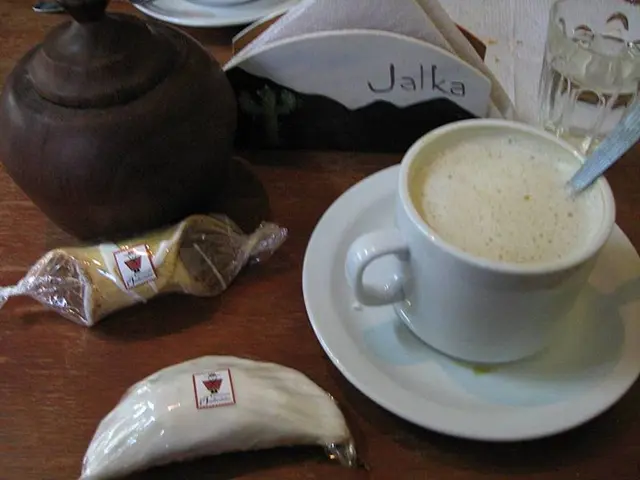Reasons for Frequent Bruising: An Examination of 8 Possible Causes
Easy bruising can be a concern for many individuals, and understanding the reasons behind this condition is essential. A variety of factors, ranging from nutritional deficiencies to underlying health conditions, can contribute to this issue.
One of the primary causes of easy bruising is vitamin deficiencies, particularly a lack of Vitamin K. This essential vitamin plays a crucial role in blood clotting, and its absence can lead to increased bleeding and bruising. Foods rich in Vitamin K, such as leafy greens, can help maintain healthy levels.
Age is another factor that can influence the likelihood of easy bruising. As people grow older, their blood vessels become more susceptible to damage due to age-related capillary fragility. This makes older individuals more prone to bruising.
Physical trauma, such as falls or sports injuries, can also cause bruising. These incidents result in blood vessel rupture under the skin, leading to the characteristic black or purple colour.
Several medical conditions can contribute to easy bruising. For instance, bleeding disorders like hemophilia and some autoimmune disorders can affect blood clotting mechanisms, potentially leading to easier bruising.
Certain medications and supplements can increase the risk of bruising by affecting blood clotting. Anticoagulants are a prime example, as they are designed to prevent blood clots but can also lead to easier bruising.
Nutritional factors, such as deficiencies in Vitamin C, can affect collagen production, potentially weakening blood vessels and making them more prone to damage.
Genetic factors may also play a role in easy bruising. Some genetic conditions can predispose individuals to easier bruising due to inherent weaknesses in blood vessel walls or clotting mechanisms.
Lifestyle factors, such as obesity, can increase pressure on blood vessels, potentially making them more susceptible to damage and easier bruising.
If frequent or severe bruising occurs, it is advisable to consult a healthcare professional to rule out underlying conditions. Leukemia, a type of cancer affecting white blood cells, may cause an increase in bleeding and bruising as a symptom. Adults with low vitamin K levels may also notice a sudden increase in bruising.
For people with diabetes, wounds, including bruises, can take longer to heal. Bleeding disorders such as Von Willebrand disease and hemophilia can cause a higher risk of bruising and excessive bleeding.
When seeking medical advice for easy bruising, it is important to inform your doctor if you have other symptoms, are taking medication, bruises are slow to heal, you notice petechiae or purpura, or if a large bruise develops after a trauma. Factors that increase the risk of easy bruising include age, genetic factors, medications such as blood thinners, and conditions that affect blood clotting.
Bruises on dark skin may appear red or purple or as a darker area than the surrounding skin. Newborns often have very low levels of vitamin K, which are insufficient to stop bleeding, and may bruise easily or bleed excessively without a vitamin K injection at birth.
Low iron levels are not typically associated with easy bruising. Symptoms of iron deficiency typically include tiredness, fatigue, shortness of breath, paleness, and heart palpitations.
Vitamin deficiencies, such as low levels of vitamin C or vitamin K, can cause weakened blood vessels and easy bruising. Some medications can cause a person to bleed and bruise more, such as warfarin, heparin, rivaroxaban, dabigatran, apixaban, aspirin, ibuprofen, naproxen, and some herbal supplements.
Vasculitis, a group of conditions that cause inflamed blood vessels, can also lead to increased bleeding, bruising, and other symptoms. Liver disease can affect liver function and blood clotting, increasing the risk of bleeding and easy bruising.
Bruises usually heal without treatment, but applying ice covered in a cloth may help reduce swelling. Low vitamin C levels can cause easy bruising, as can low vitamin K levels, as these vitamins help the body form clots to stop bleeding.
Older adults often bruise more easily due to less flexible skin and less fat to protect blood vessels, and sun exposure can increase the risk. Bruises develop when blood vessels sustain damage and blood leaks into tissues under the skin, causing a black or purple color. Bruises heal in a few days, but some people may bruise more easily than others, and healing can take longer.
Senile purpura is a condition affecting older adults, causing dark purple bruise-like lesions on the skin, most commonly on the arms and hands. It is more common in people with light skin, but anyone can develop it.
- Vitamin deficiencies, specifically a lack of Vitamin K, can lead to easy bruising due to its role in blood clotting.
- As age advances, individuals become more susceptible to easier bruising due to age-related capillary fragility.
- Physical trauma, such as falls or sports injuries, can result in blood vessel rupture, causing bruising.
- Medical conditions like bleeding disorders and autoimmune disorders can affect blood clotting, potentially leading to easier bruising.
- Certain medications and supplements, particularly anticoagulants, can increase the risk of bruising by impacting blood clotting.
- Nutritional factors, including deficiencies in Vitamin C, can influence collagen production, potentially resulting in weaker blood vessels.
- Genetic factors may contribute to easy bruising due to inherited weaknesses in blood vessel walls or clotting mechanisms.
- Lifestyle factors, such as obesity, can increase pressure on blood vessels, potentially leading to easier bruising.
- When frequent or severe bruising occurs, it is crucial to seek medical advice to check for underlying conditions, like leukemia or low vitamin K levels.
- People with diabetes may experience slower healing for wounds, including bruises, due to their condition.
- Informing a healthcare professional about other symptoms, medication usage, slow healing bruises, petechiae or purpura, or large bruises after trauma is essential.
- Bruises on dark skin may appear as red or purple or a darker area than the surrounding skin.
- Low iron levels are not usually associated with easy bruising; symptoms of iron deficiency typically include tiredness, shortness of breath, paleness, and heart palpitations.




